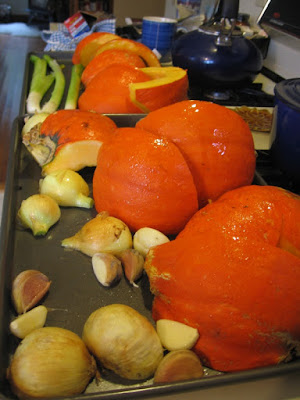
The first frosts have come, and in the past several weeks, we have hurriedly gathered the last of the pole beans, basil, and some heirloom cherry tomatoes that proved surprisingly resistant to the late blight. We stored the squash, garlic and potatoes; replanted next season’s garlic; cleared debris from spent beds; and began to mulch the berries and fruit trees. We gauged the remaining chard, kale, and sorrel, whose leaves withstand even the early killing frosts; enjoyed the resurgence of arugala which has reseeded itself throughout the garden (and garden paths); and knew that the cabbage, leeks and carrots could be left in the ground to harvest as needed over the coming months. These are familiar rhythms to gardeners and farmers in the Northeast U.S.
But for us this year, some of the rhythms of this transitional season are new.
This fall, we are also evoking rituals of spring, tending young greens – planted in late August and early September – and watching them thrive in these cooler days. Some of the crops are familiar, others are as new as the rhythms of planting, weeding, and thinning at a time when most of the garden is heading toward dormancy. There’s spinach, beets, mâche, claytonia, radishes, mustards, raddichio, a mesclun mix, and a variety of Asian greens.





Our goal is to eventually have freshly harvested greens throughout the entire year. Our guide: the writings of Eliot Coleman, an inspiring farmer, researcher, writer and local foods activist from Harborside, Maine. The author of (most recently) The Winter Harvest Handbook, Coleman profitably brings vegetables to market year-round from his zone 5 Four Season Farm using unheated, plastic-covered “hoop houses.” His success challenges the myth that we must ship food 3,000 miles across the U.S. because northeast winters preclude year-round vegetable production.
While “fall gardens” – vegetables planted in mid- to late-summer for fall harvest – are an old, if relatively lost, North American tradition, Coleman’s work opens the possibilities of extending that harvest into the frigid, snowy months by selecting cold-tolerant crops and providing minimal protection. One version of this protection, low “hoop houses” – plastic secured over small wire hoops – is quick and inexpensive to erect. We put them up a couple weeks ago when night-time temperatures began to frequently drop below freezing.
Next year, we will replace them with a “walk-in” structure – a hoop-framed greenhouse -- still unheated, but significantly larger and easier to access.
We’ve made only a small start this year, still acclimating ourselves to these unexpected rhythms. But we hope to have fresh salads and stir-fries into the new year. I’ll write more about what we’re growing and how it’s doing as this new gardening season unfolds.









